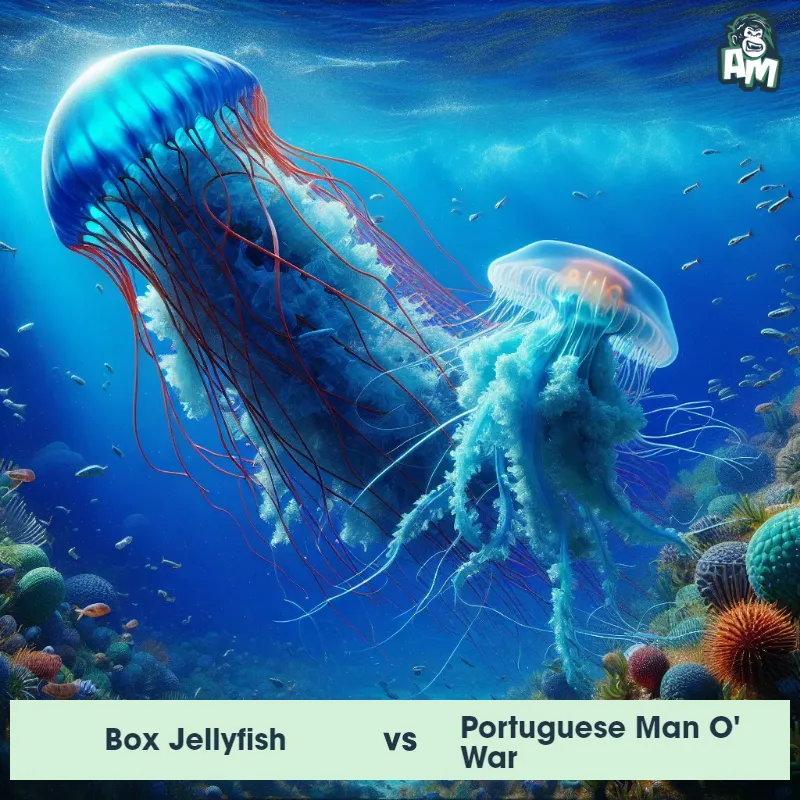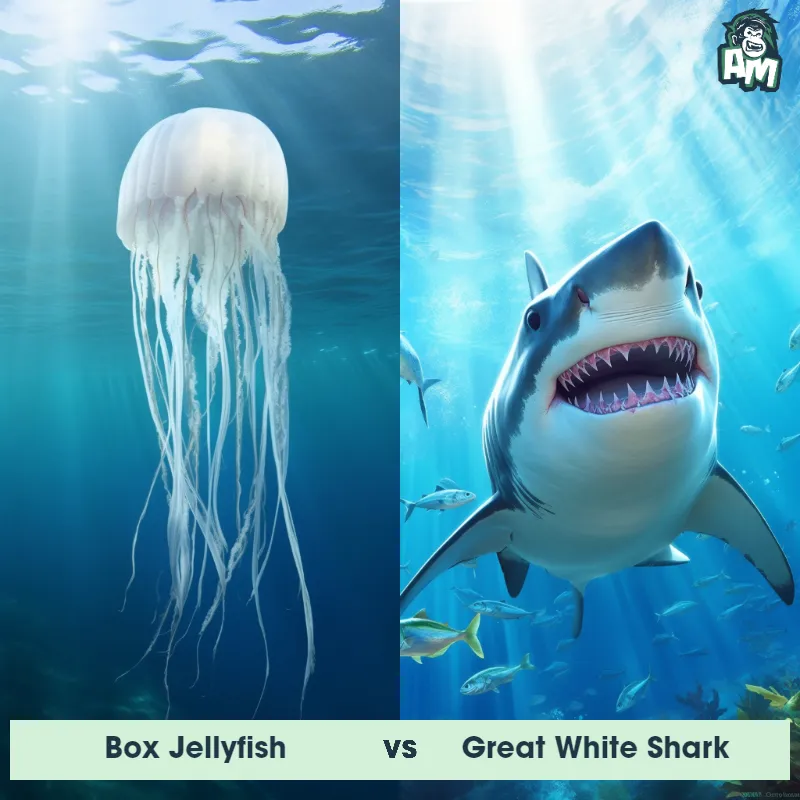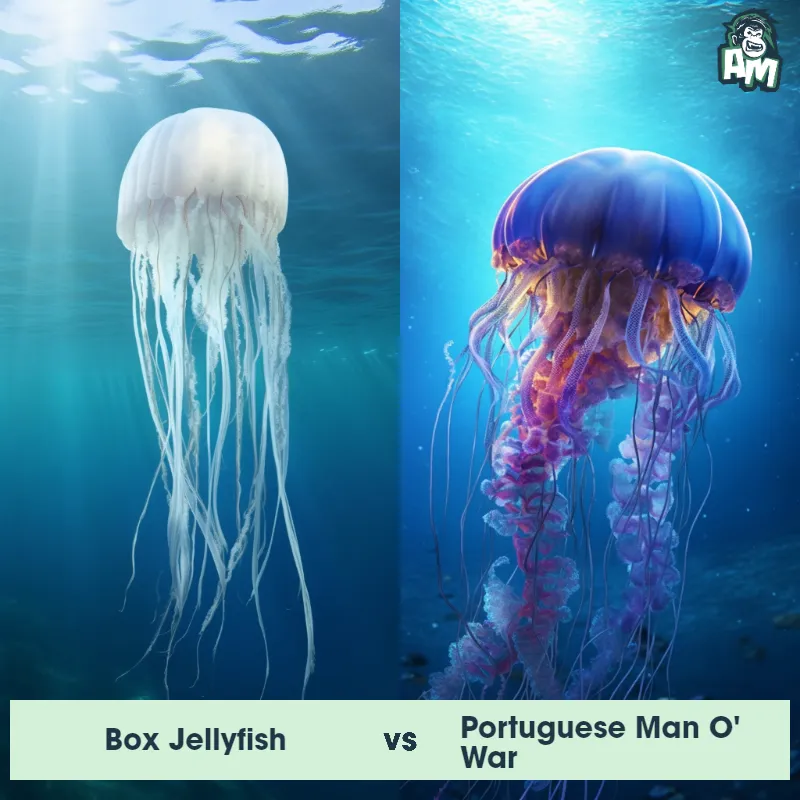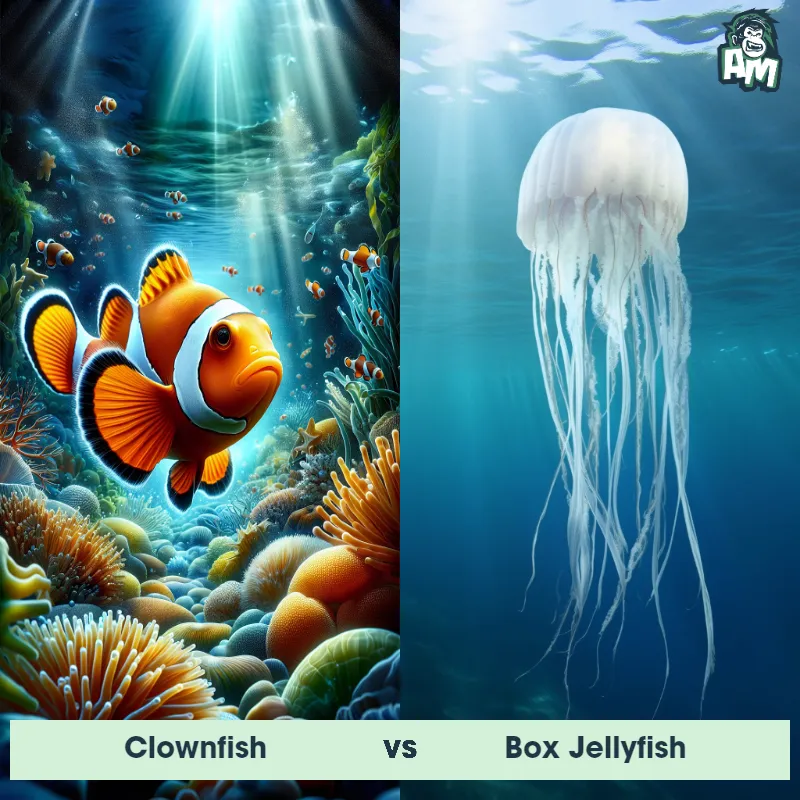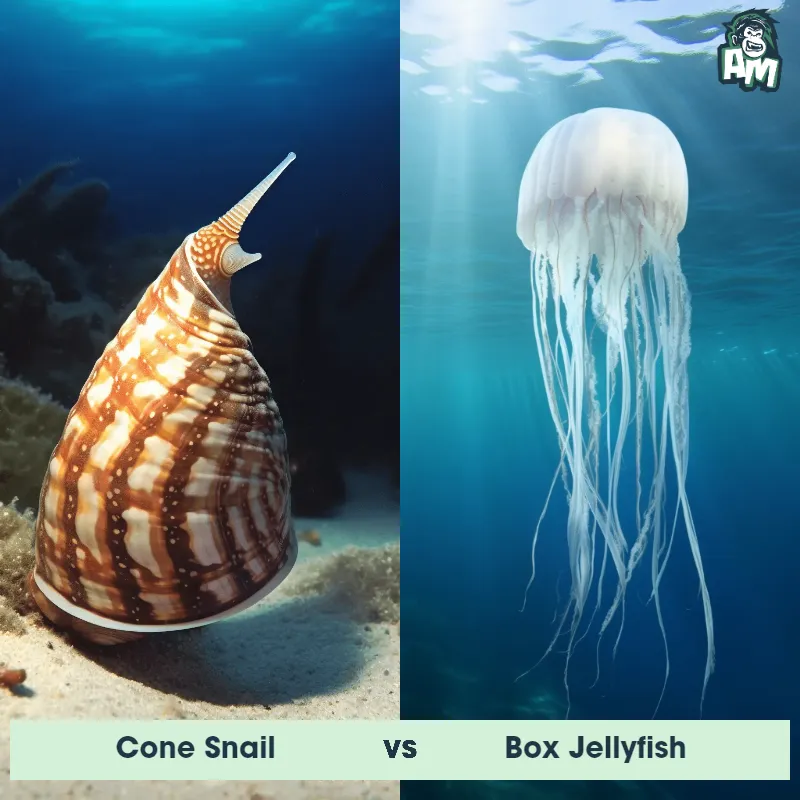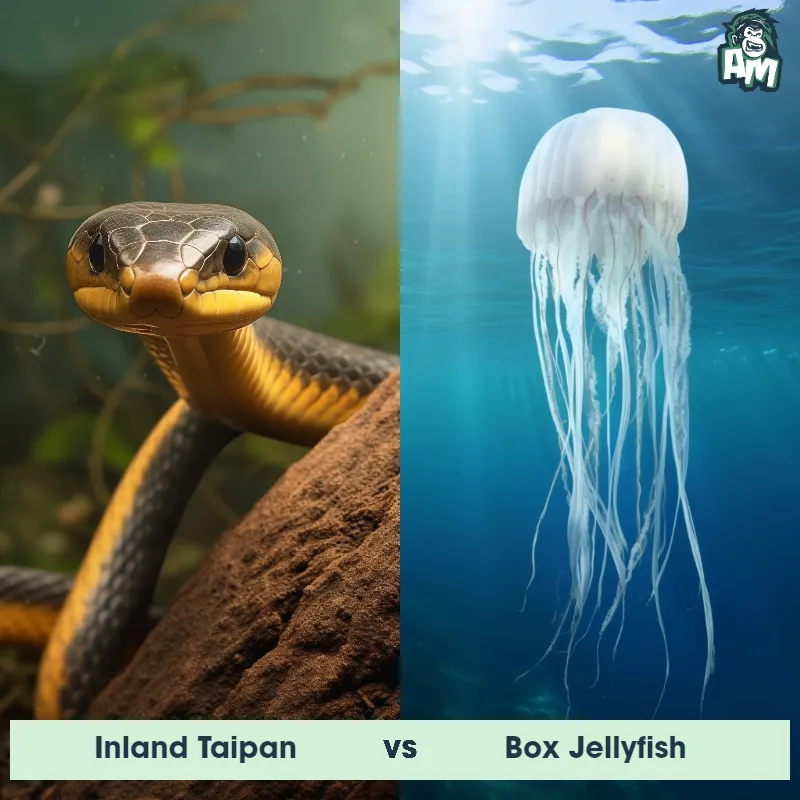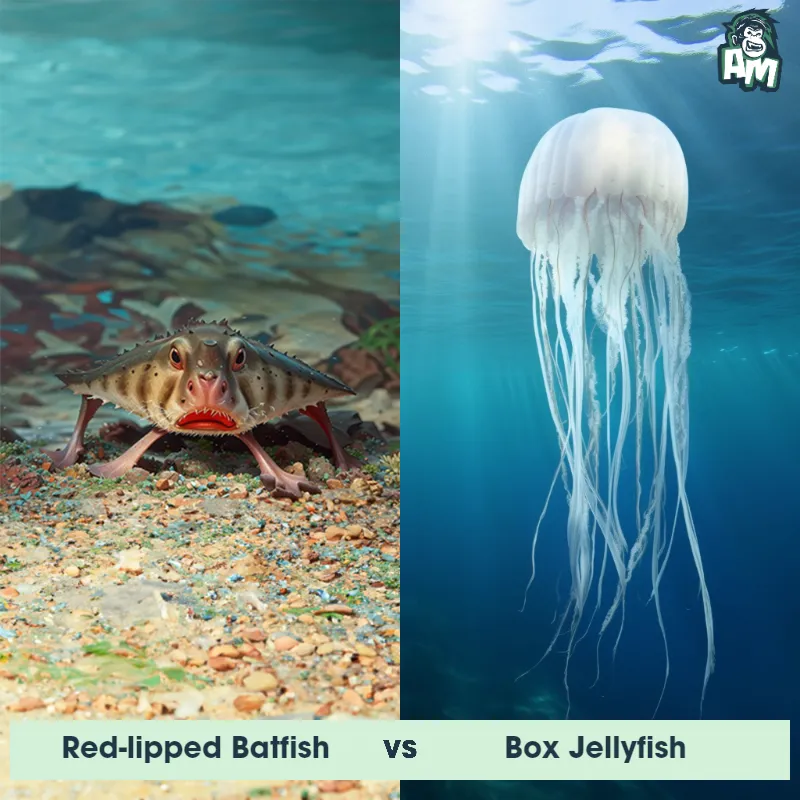The Box Jellyfish
The Box Jellyfish, also known as Chironex fleckeri, is a highly venomous marine creature that belongs to the class Cubozoa. It is one of the most dangerous jellyfish in the world. Its bell-shaped body can reach sizes of up to 30 centimeters in diameter, and it has long, tentacle-like appendages that trail from each corner of its body. These tentacles are covered in venomous cells called nematocysts, which deliver a potent toxin capable of causing severe pain, paralysis, and even death in humans. With its transparent body and pale blue or transparent color, the Box Jellyfish can be difficult to spot in the water, making it an especially dangerous threat to swimmers.

| Box Jellyfish | |
|---|---|
| Size | Up to 10 feet (3 meters) |
| Weight | Up to 4.4 pounds (2 kilograms) |
| Speed | Speed: 4 mph (6.4 km/hr) |
| Key Strength | Venomous tentacles |
| Biggest Weakness | Not an aggressive predator |
| Scientific Name | Chironex fleckeri |
| Family | Chirodropidae |
| Habitat | Marine |
| Geography | Pacific and Indian Oceans |
| Diet | Small fish, shrimp, and other jellyfish |
| Lifespan | few hours - few months |

The Box Jellyfish
The Box Jellyfish, also known as Chironex fleckeri, is a highly venomous marine creature that belongs to the class Cubozoa. It is one of the most dangerous jellyfish in the world. Its bell-shaped body can reach sizes of up to 30 centimeters in diameter, and it has long, tentacle-like appendages that trail from each corner of its body. These tentacles are covered in venomous cells called nematocysts, which deliver a potent toxin capable of causing severe pain, paralysis, and even death in humans. With its transparent body and pale blue or transparent color, the Box Jellyfish can be difficult to spot in the water, making it an especially dangerous threat to swimmers.
Fun Fact: The venom of the Box Jellyfish is so potent that it can cause heart failure in just a few minutes, and even if a person survives the initial sting, the venom can continue to cause damage for hours after the jellyfish has been removed from the skin.
| Box Jellyfish | |
|---|---|
| Size | Up to 10 feet (3 meters) |
| Weight | Up to 4.4 pounds (2 kilograms) |
| Speed | Speed: 4 mph (6.4 km/hr) |
| Key Strength | Venomous tentacles |
| Biggest Weakness | Not an aggressive predator |
| Scientific Name | Chironex fleckeri |
| Family | Chirodropidae |
| Habitat | Marine |
| Geography | Pacific and Indian Oceans |
| Diet | Small fish, shrimp, and other jellyfish |
| Lifespan | few hours - few months |
Match Highlights
Box Jellyfish Matchups
We use AI to simulate matchups between the Box Jellyfish and other animals. Our simulation considers size, strength, and natural predatory behaviors to determine the most likely outcome.
Box Jellyfish: Diet, Predators, Aggression, and Defensive Behaviors
What do Box Jellyfish eat?
Box Jellyfish primarily feed on small fish and crustaceans. They use their long tentacles armed with stinging cells to capture and paralyze their prey before bringing it to their mouth for digestion. They are known to be efficient hunters in the ocean.
Do Box Jellyfish have any predators?
Despite their potent sting, Box Jellyfish do have predators in the ocean. Some species of sea turtles, particularly the leatherback turtle, are known to feed on Box Jellyfish. Additionally, some types of fish and other larger jellyfish may prey on smaller Box Jellyfish.
Are Box Jellyfish aggressive?
Box Jellyfish are not inherently aggressive, but they can become dangerous if threatened or provoked. Their stingers contain a powerful venom that can cause severe pain and even be fatal to humans. It is important to avoid contact with Box Jellyfish to prevent getting stung.
Do Box Jellyfish fight with other creatures?
Box Jellyfish do not engage in physical fights with other creatures. They mainly rely on their venomous tentacles to defend themselves and capture prey. However, they may compete with other jellyfish for food and territory in the ocean.
How do Box Jellyfish defend themselves?
Box Jellyfish defend themselves using their long tentacles equipped with venomous stingers. When threatened, they can release their toxins into the water, which can deter potential predators and protect them from harm. Their transparent bell-shaped body also helps them camouflage in the ocean, making it easier to avoid danger.
What is the biggest weakness of Box Jellyfish in a fight?
The biggest weakness of Box Jellyfish in a fight is their delicate bell-shaped body. Despite their powerful venom and long tentacles, Box Jellyfish are relatively fragile creatures that can be easily injured or killed by predators with sharp teeth or claws. Their soft body makes them vulnerable to physical attacks, especially from larger and more robust predators.
Fun Fact: Despite being a jellyfish, the Box Jellyfish has a relatively complex visual system, with a total of 24 eyes grouped into four clusters known as rhopalia. Each cluster contains six eyes, including two with a more advanced image-forming capability, allowing the jellyfish to detect the presence of objects and respond to light.
Fun Fact: The Box Jellyfish is an active predator that uses its tentacles to capture and immobilize prey, mainly small fish, shrimp, and crustaceans. Its venom paralyzes its prey almost instantly, allowing the jellyfish to consume them. However, the diet of the Box Jellyfish can vary depending on its location, as it has been known to feed on other jellyfish and even its own species in some cases.



